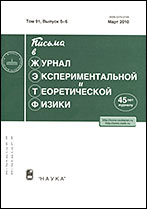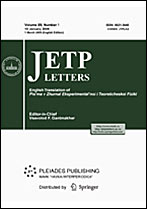|
This article is cited in 10 scientific papers (total in 10 papers)
PLASMA, HYDRO- AND GAS DYNAMICS
Dusty plasma near the surface of phobos
S. I. Popelabc, A. P. Golub'a, A. V. Zakharova, L. M. Zelenyiabc
a Space Research Institute, Russian Academy of Sciences, Moscow, Russia
b Moscow Institute of Physics and Technology (State University), Dolgoprudnyi, Russia
c National Research University Higher School of Economics, Moscow, Russia
Abstract:
It has been shown that a dusty plasma is formed in the surface layer over the illuminated part of Mars’ satellite Phobos owing to photoelectric and electrostatic processes. The distribution functions of photoelectrons near its surface, altitude dependences of the density of dust particles, and their charges and sizes, as well as electric fields, have been determined within a physicomathematical model for the self-consistent description of densities of photoelectrons and dust particles over the surface of the illuminated part of Phobos. In view of a weak gravitational field, dust particles rising over the surface of Phobos are larger than those over the surface of the Moon. In this case, the role of adhesion, which is a significant process preventing the separation of dust particles from the lunar surface, is much smaller on Phobos.
Received: 15.09.2017
Citation:
S. I. Popel, A. P. Golub', A. V. Zakharov, L. M. Zelenyi, “Dusty plasma near the surface of phobos”, Pis'ma v Zh. Èksper. Teoret. Fiz., 106:8 (2017), 469–475; JETP Letters, 106:8 (2017), 485–490
Linking options:
https://www.mathnet.ru/eng/jetpl5391 https://www.mathnet.ru/eng/jetpl/v106/i8/p469
|


| Statistics & downloads: |
| Abstract page: | 233 | | Full-text PDF : | 37 | | References: | 48 | | First page: | 13 |
|





 Contact us:
Contact us: Terms of Use
Terms of Use
 Registration to the website
Registration to the website Logotypes
Logotypes







 Citation in format
Citation in format 
